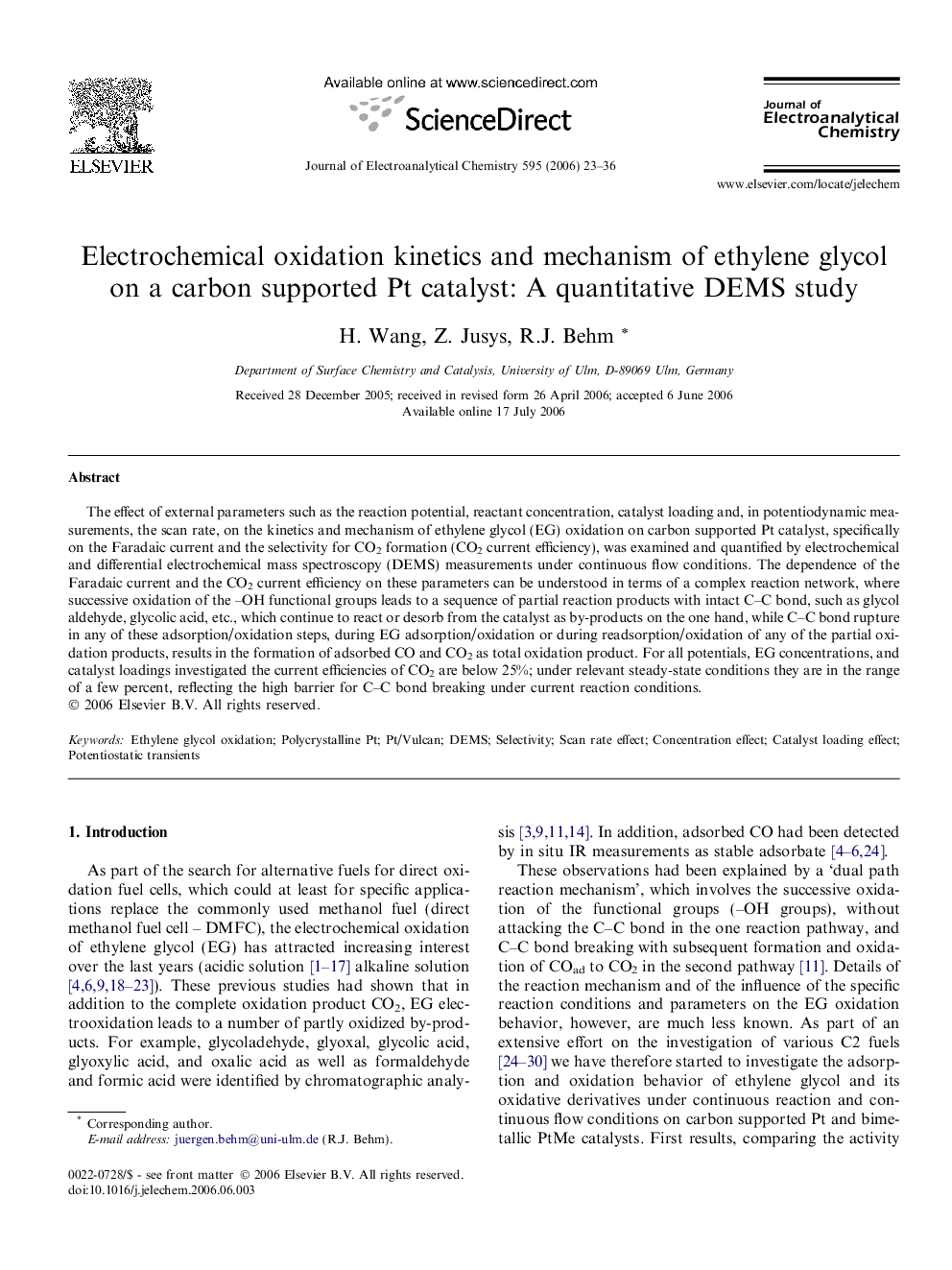| Article ID | Journal | Published Year | Pages | File Type |
|---|---|---|---|---|
| 221216 | Journal of Electroanalytical Chemistry | 2006 | 14 Pages |
The effect of external parameters such as the reaction potential, reactant concentration, catalyst loading and, in potentiodynamic measurements, the scan rate, on the kinetics and mechanism of ethylene glycol (EG) oxidation on carbon supported Pt catalyst, specifically on the Faradaic current and the selectivity for CO2 formation (CO2 current efficiency), was examined and quantified by electrochemical and differential electrochemical mass spectroscopy (DEMS) measurements under continuous flow conditions. The dependence of the Faradaic current and the CO2 current efficiency on these parameters can be understood in terms of a complex reaction network, where successive oxidation of the –OH functional groups leads to a sequence of partial reaction products with intact C–C bond, such as glycol aldehyde, glycolic acid, etc., which continue to react or desorb from the catalyst as by-products on the one hand, while C–C bond rupture in any of these adsorption/oxidation steps, during EG adsorption/oxidation or during readsorption/oxidation of any of the partial oxidation products, results in the formation of adsorbed CO and CO2 as total oxidation product. For all potentials, EG concentrations, and catalyst loadings investigated the current efficiencies of CO2 are below 25%; under relevant steady-state conditions they are in the range of a few percent, reflecting the high barrier for C–C bond breaking under current reaction conditions.
